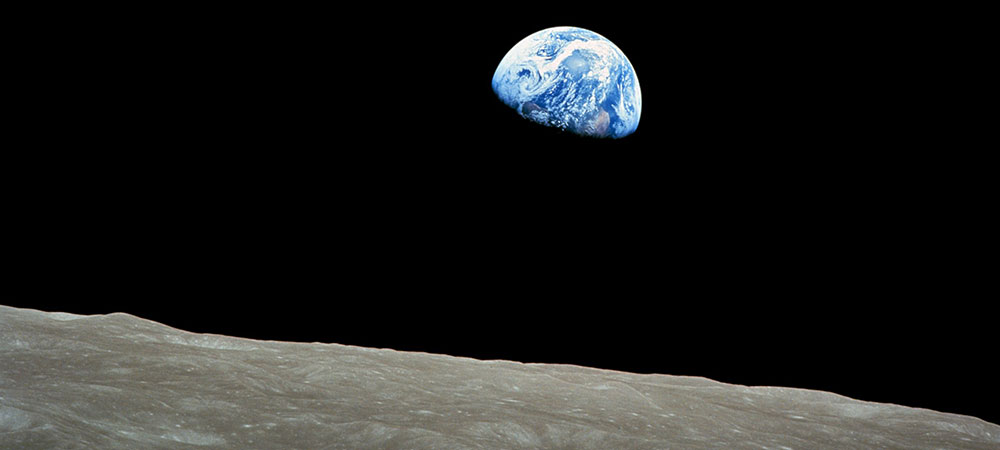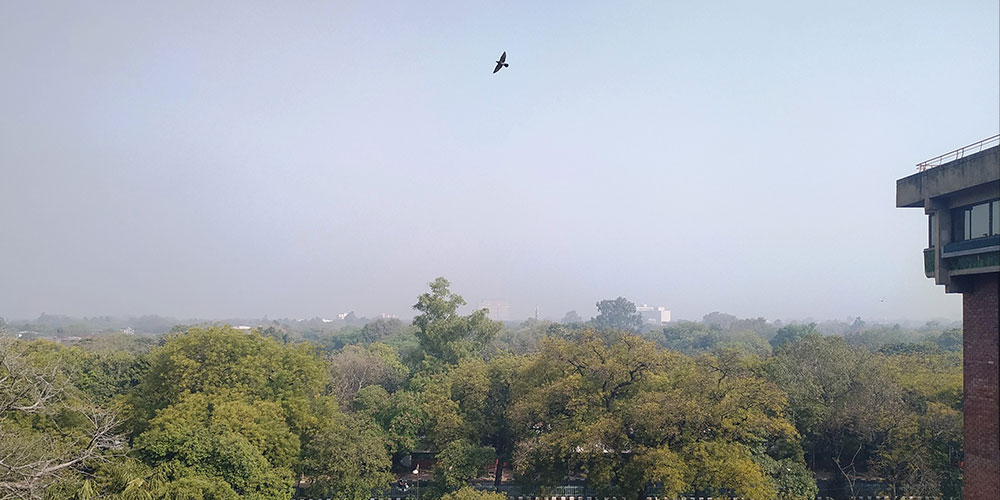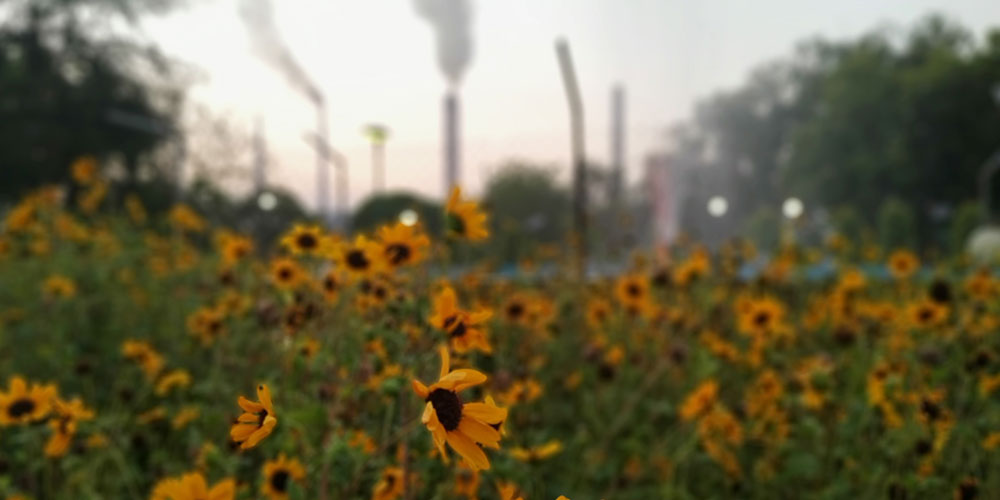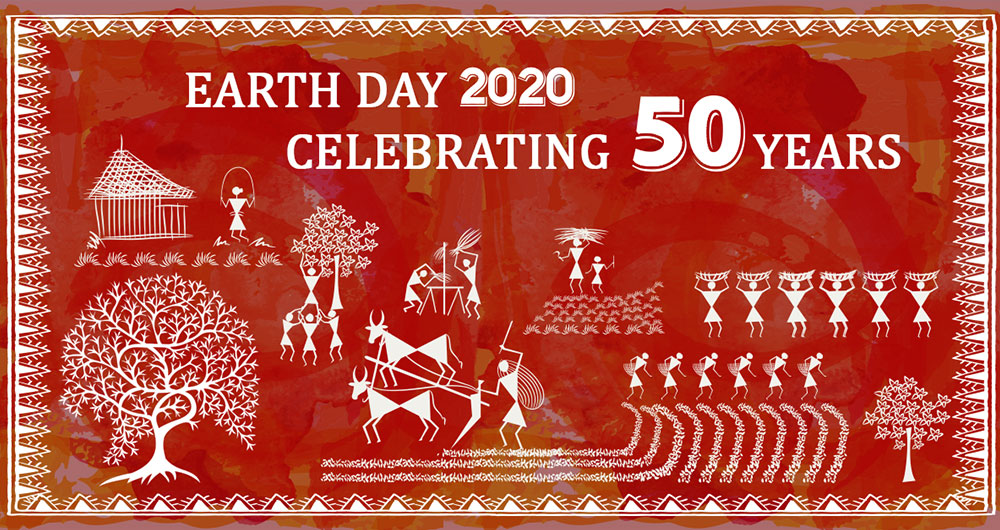Earth Day in 1970 began like any other movement: obscure and unpretentious at its genesis; gained momentum fed by other streams of thought; and eventually broadened by pressing environmental issues of the time.

It is safe to say that when, on April 22, 1970, some 20 million people in the United States marched to stop the perilous pollution of natural resources; it was, in fact, an offspring of a decade simmering with social activism in the West. Rachel Carson's paradigm-shifting book Silent Spring highlighted the ill effects of chemical pesticide use and its impact on the diminishing bird population. Her cultural contribution created a ripple in the groundwaters of American popular culture. An oil spill in a river in California made things worse.
And in the latter half of the decade, NASA's Apollo missions set out to explore space.

It is by no accident that the first Earth Day occurred a few months after this image was taken. It is perhaps the most influential environmental photograph in the world. Hundreds of such visuals of our isolated ecosystem floating in space were generated during pioneering lunar missions.
For the first time, an entire generation saw the hypnotic swirl of our home planet, instead of an ordinary classroom globe. These visuals of our tiny Blue Marble, floating somewhere between immensity and eternity, revealed a deep sense of wonder and awe for our environment. We absorbed an inescapable perspective that national boundaries and man-made barriers are not evident when we see the Earth as a whole. In trying to find the moon, we discovered our sense of who we are and our relationship to the Blue Planet.
In the 1970s, environmentalism had arrived in the US. The first Earth Day raised awareness about clean air, clean water, and endangered species years before climate change had emerged as a major threat. In the subsequent years, there was remarkable progress: the federal acts for clean air, clean water, and endangered species, and above all, the creation of the Environmental Protection Agency. And perhaps after listening to Joni Mitchell's lyrics "give me spots on my apples, but leave me the birds and the bees," the US government decided to put away DDT pesticide for good. In our own backyard, the Chipko movement by women in the Himalayas rekindled the idea of environmental conservation throughout India. Even climate change should have been an agenda, we had not connected the dots just yet.

The first Earth Day united people from all walks of life—activists, world leaders, protestors, and students—for a future worth fighting for. Realising that common efforts will lead to effective solutions, the United Nations Environment Programme was created in June 1972 for global environmental governance.
The shots heard around the world
The decade that followed was an epoch of making meaningful pledges, and 90s were about sticking to those commitments. The 1987 Montreal Protocol urged countries to cut back on ozone-depleting substances. The 1997 Kyoto Protocol became the first agreement to mandate CO2 emissions of 37 industrialized nations. Climatologists and scientists discovered the Greenhouse Gas effect and soon after, the term ‘Global Warming' was being used around the world. As the Earth Day celebrations turned global in the 1990s, acid rain, deforestation, biodiversity loss, wildlife conservation, water sanitation, and renewable energy became pivotal issues. The First Assessment Report (FAR) of the Intergovernmental Panel on Climate Change in 1990 articulated the socio-economic impact of climate change. In retrospect, it's clear that the warning signals were largely ignored.

At the turn of the century, Al Gore's An Inconvenient Truth made an attempt to raise public awareness about the looming threat of climate change. Under the Paris Agreement, leaders of 195 nations join hands to cap global warming at two degrees Celsius by the end of this century. However, when it comes to meeting our ambitions, much remains to be done.
The Himalayas are melting. The Amazon is burning. The Permafrost is thawing. The clock is ticking. The gap is widening. The window to act is closing. And here we are, running a cost-benefit analysis to save our only home—in a hundred billion galaxies, there's no Planet B.
Celebrating Earth Day 2020: A journey of 50 years
Our planet looks different since 1970. We added four billion of us in five decades whereas there has been an average 60 percent decline across wildlife populations. Our planet experienced 17 of the last 18 warmest years since 2000.
Over the decades, the environmental activism has come in various forms—be it Jane Goodall studying the chimpanzees in Africa or Professor Carl Sagan communicating science or a young teenager mobilising millions to march for environmental justice.
D i s t a n t but not Silent
Ghastly different from the first Earth Day, 50th-anniversary celebrations will be quite a bit different. In the COVID-19 pandemic, most of us are the isolated subjects of Edward Hopper's paintings. Earth Day Network and millions of climate-concerned Earthlings are coordinating online events in more than 193 countries. But, due to nationwide lockdowns across the world, this year's spring is strangely silent again.

Did climate change cause COVID-19 pandemic? NO. Did climate change make it worse? YES. Climate change is certainly a threat multiplier—meaning that as we continue to displace ecosystems, melt permafrost, and burn fossil fuels, phenomena like coronavirus will become the new normal. Unusual changes in temperature or humidity directly affect the survival of microbes in the environment. The UNEP Frontiers report in 2016 suggested that zoonotic diseases, that spill over from animals to humans, thrive as the climate continues to change. COVID-19 is a 100-metre sprint race we must outrun; climate change is a marathon we must win.
A grim spectre has sneaked up on us. The COVID-19 crisis has shown the importance of taking drastic and comprehensive measures for our well-being. We temporarily have cleaner air, water, and land, but not at the cost any of us would feel comfortable. Today, we find ourselves in a world facing global threats that demand a unified global response. There can be no further delay by governments across the board in pushing energy transitions, industry transitions, sustainable mobility and resource efficiency. As has often been said, the cost of inaction is enormous and is already hurting millions of poor and vulnerable people around the world.
At an individual level, sustainable lifestyles have to become the norm. It could be turning off electrical appliances when not in use or switching to cleaner fuels or buying products from retail companies with zero-waste targets. We must strike a balance between our ambitions and efforts by cycling to work more often, practicing composting, adopting rooftop solar, using energy-saving ACs. By all means, we must cure ourselves of the itch for short-term economic gain.
The crisis of today has pushed us into the circles of social distancing. In our newfound leisure, it would be wise to listen to the gentle murmurs of silent spring once more.

Primitive civilizations did not have the benefit of science and technology to understand their future well enough. But what a great misfortune it would be for our species that knew what was coming and didn't prepare ahead. Either we can pigheadedly continue the baleful pursuit of short-term economic gain while degrading and polluting resources that sustain us, or we can collectively find ways to mitigate and adapt to climate change.
We can't let our humanity off the hook. Let's not wait for another crisis to goad us into action. Earth day is every day!
Dhawal Trivedi works in the Communications team of TERI
